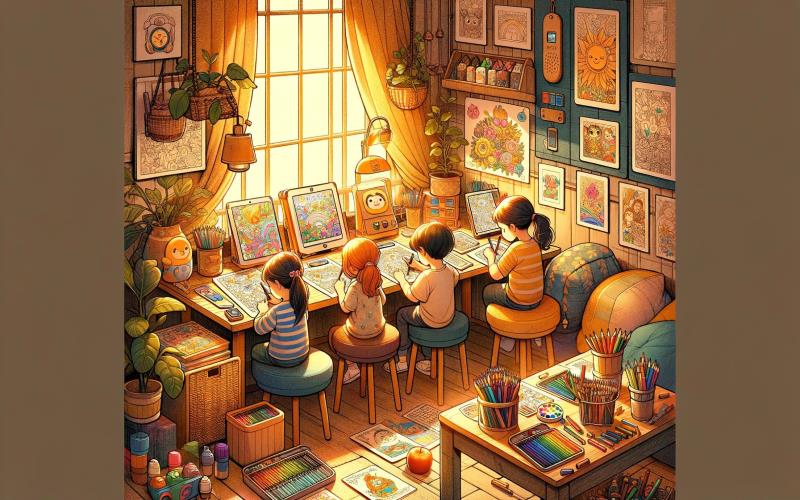In today’s digital age, screens are an integral part of our daily lives, including our children’s. While technology undeniably offers educational and entertainment value, excessive screen time can impact children’s physical health, emotional well-being, and creativity.
Recognizing the need for a balance, “Digital Detox: Creative Strategies to Swap Screens for Crayons” offers parents and educators effective methods for encouraging children to embrace the tactile and imaginative world of coloring.
Here are some innovative strategies to help kids reduce screen time and rediscover the joy of coloring.
Establish a Dedicated Coloring Station
Creating an enticing space devoted to coloring can significantly spark a child’s interest in artistic activities. Equip the station with various coloring materials—crayons, markers, colored pencils—and a wide range of coloring pages that cater to different interests.
This space should be accessible, inviting, and brightly lit, making it an attractive alternative to the glow of screens.
Schedule Regular Coloring Times
Routine plays a crucial role in children’s lives. Just as screen time can become a habit, so can coloring. Setting aside specific times of the day for coloring activities can help children anticipate and prepare for a break from screens.
Regular coloring times can seamlessly integrate this creative activity into your child’s daily schedule, whether after homework, before dinner, or as part of the bedtime routine.
Use Coloring as a Wind-Down Activity
Screens emit blue light, which can interfere with sleep patterns. Conversely, coloring is a calming activity that doesn’t strain the eyes or overstimulate the brain, making it an ideal pre-bedtime activity.
Encourage coloring as a way to wind down in the evening, allowing children to relax and prepare for a good night’s sleep. You can make this time special by joining in and fostering a quiet moment of bonding and relaxation.
Incorporate Coloring Into Learning
Coloring doesn’t have to be separate from learning; it can be a part of it. Swap digital educational games with coloring pages that reinforce learning objectives.
From alphabet and number or favorite characters, such as Demon Slayer coloring pages for younger children, to detailed maps, historical figures, and science concepts for older kids, coloring can make learning tangible and engaging. Discussing the subjects being colored can further enhance knowledge retention and understanding.
Lead by Example
Children often emulate adult behavior. By showing an interest in coloring or engaging in other non-screen-related hobbies, adults can inspire children to explore similar activities.
Share your creations, discuss the process, and display the finished works around the house. This will show children the value of creativity and encourage them to take pride in their work.
Reducing screen time in favor of coloring activities offers many benefits for children, including promoting creativity, improving fine motor skills, and supporting emotional well-being.
By establishing a dedicated coloring station, incorporating coloring into the daily routine, and using these activities as learning and wind-down tools, parents and educators can help children transition from screens to crayons.
They foster an environment where imagination and creativity flourish, ensuring a balanced and enriching childhood experience.
Source: ESLE

